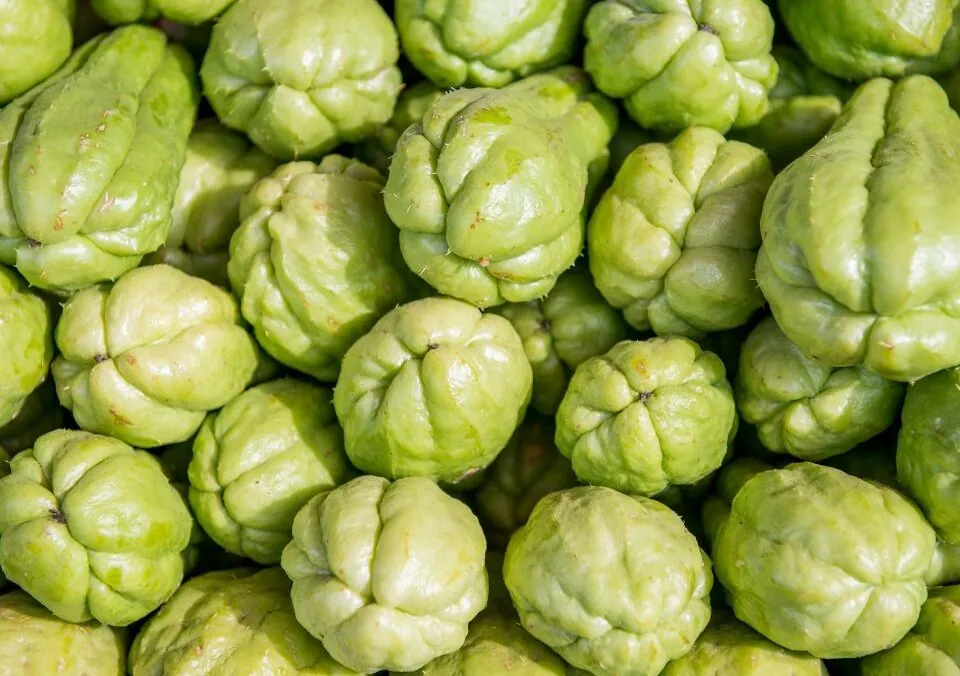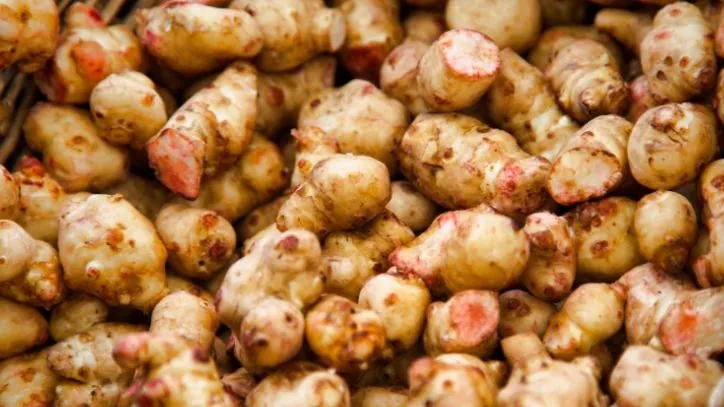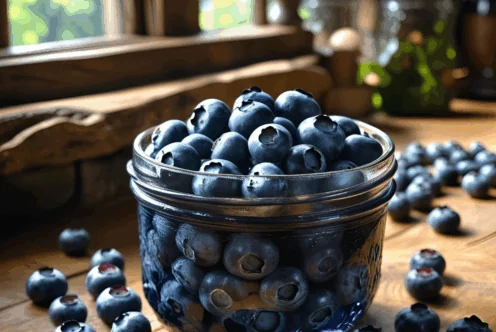Blog
Give Odd Vegetables a Try!

In recent years, the culinary world has seen a surge in interest towards unique and lesser-known fruits and vegetables. Often overlooked for their unusual shapes and sizes, these odd vegetables are gaining a reputation for being not only delicious but also packed with nutrients essential for our health. Think of them as the quirky, flavorful relatives of more common vegetables that deserve a spotlight in our meals. Being adventurous in the kitchen can introduce a variety of tastes and textures to your diet while supporting a rich and diverse agricultural landscape.
Celeriac: The Ugly Celery
Celeriac, or celery root, is one of those vegetables that one might easily overlook at the grocery store. Known for its knobby and bumpy exterior, celeriac is the lesser-known cousin of celery. However, underneath its rugged facade lies a treasure trove of flavor and nutrition.
Culinary Uses
Celeriac has a distinct flavor reminiscent of celery blended with the earthy qualities of a potato. This makes it incredibly versatile in the kitchen:
- Shredded in Salads: When raw, celeriac can be shredded into salads, adding a crunchy texture along with a fresh, zesty flavor.
- Roasted: Tossed with olive oil and herbs, celeriac roasts beautifully, caramelizing on the outside while remaining tender on the inside.
- Mashed Alternative: For those looking to reduce carbohydrates, celeriac can be boiled and mashed as an alternative to traditional mashed potatoes, yielding a creamy and flavorful dish.
Health Benefits
Celeriac is nutrient-rich, providing:
- Vitamin C: Important for the immune system and skin health.
- Vitamin K: Plays a key role in blood clotting and bone metabolism.
- Fiber: Promotes digestive health.
- Minerals: Such as phosphorus, manganese, molybdenum, and potassium vital for bodily functions.
For more details about celeriac, check this source.
Romanesco: Nature’s Art
If you’re looking for a vegetable that’s as beautiful as it is delicious, look no further than romanesco. With its unique fractal pattern and vibrant green color, romanesco is not only stunning on the plate but also a rewarding ingredient to work with in the kitchen.
Culinary Uses
Romanesco can be used in several ways:
- Raw: Its crunchy texture makes it an excellent addition to vegetable platters or salads.
- Blanched or Steamed: Slightly cooking it can amplify its milder flavor while retaining its vibrant color.
- Roasted or Sautéed: When roasted, the natural sugars in romanesco caramelize, creating a nutty taste that pairs well with a variety of seasonings.
Health Benefits
Romanesco is rich in nutrients, offering:
- Vitamin C: Supports immune function and collagen formation.
- Folate: Essential for DNA synthesis and repair, particularly important during pregnancy.
- Fiber: Aids in digestion and helps maintain a healthy weight.
For more information about romanesco, you can read this article.

Sunchokes: The Artichoke’s Cousin
Sunchokes, also known as Jerusalem artichokes, have an earthy, nutty flavor that sets them apart from other root vegetables. Although they can initially be mistaken for ginger roots, their culinary potential is expansive and exciting.
Culinary Uses
Sunchokes can be prepared in numerous ways:
- Raw: Sliced into salads for a crunchy element.
- Baked or Roasted: Roasting them enhances their flavor and brings out natural sweetness.
- Mashed: They can be boiled and mashed similarly to potatoes for a creamy side dish.
Health Benefits
Rich in nutrients, sunchokes offer:
- Vitamin B1 (Thiamine): Important for energy metabolism and nerve function.
- Iron: Vital for transporting oxygen in the bloodstream.
- Fiber: Promotes digestive health and may help regulate blood sugar levels.
For an in-depth look at sunchokes, you can visit this website.
Chayote: The Curious Squash
Chayote is an intriguing pear-shaped vegetable that falls under the category of summer squash. With its pale green skin and mild flavor, chayote can be a refreshing addition to many dishes.
Culinary Uses
Chayote’s versatility makes it a great ingredient:
- In Soups: Adding chayote to soups enhances the broth with its subtle flavor.
- In Salads: When sliced thinly, it adds a refreshing crunch similar to cucumber.
- Roasted: Roasting can caramelize its natural sugars, yielding a sweeter taste.
Health Benefits
Chayote boasts a healthy nutritional profile, including:
- Vitamin C: Supports skin health and antioxidant functions.
- Lower Carbohydrates: Suitable for those watching their carbohydrate intake.
- Fiber: Aids in digestion.
To learn more about chayote, check out this article from Healthline.
Purslane: The Edible Weed
Purslane is an unusual entry in the vegetable aisle—often regarded as a weed, this succulent plant has been cultivated for culinary uses in various cultures for centuries. Its slightly tart and peppery flavor adds a unique twist to dishes.
Culinary Uses
Purslane can be incorporated into meals in various ways:
- Salads: Adds a fresh, lemony flavor when used in salads.
- Soups and Stews: It can be added to soups to provide both texture and flavor.
- Stir-fry: Briefly cooked, it can retain its vibrant taste and color.
Health Benefits
Purslane is notably packed with nutrients:
- Vitamins C, A, and K: Essential for overall health.
- Omega-3 Fatty Acids: Unique for a leafy green, promoting heart health.
- Magnesium: Important for muscle and nerve function.
For a deeper understanding of purslane’s benefits, visit this article.
Maitake Mushrooms: The Ruffled Delights
Maitake mushrooms, also known as “hen of the woods,” are easily recognized by their fan-like shape and ruffled edges. They not only add an earthy flavor to dishes but also come with a host of health benefits.
Culinary Uses
These mushrooms can be used in a multitude of dishes:
- Soups: They add depth to broths and stews.
- Stir-fries and Sautéed Dishes: Their texture holds up well in a stir-fry, providing a meaty bite.
- Wraps or Burgers: Used as a flavorful filling or topping.
Health Benefits
Maitake mushrooms are particularly noted for their health contributions:
- Vitamin D: A one-cup serving provides an impressive percentage of the daily recommended value, essential for bone health.
- Riboflavin: Supports energy production.
- Copper and Niacin: Important for cardiovascular health.
For a more complete overview of maitake mushrooms, you can check out this resource.
Why Embrace Odd Vegetables?
Incorporating odd vegetables into your meals not only broadens your palate but also has significant benefits for your health and the environment. Here are a few reasons to embrace these culinary treasures:
Nutritional Diversity
Consuming a variety of vegetables ensures a wide range of nutrients, which can help prevent nutritional deficiencies. Odd vegetables often have unique profiles that can complement the more common vegetables that make up most diets.
Seasonal Eating
Many odd vegetables are seasonal and can often be found at farmers’ markets. This encourages local eating and supports local farmers, reducing the carbon footprint associated with transporting produce over long distances.
Environmental Sustainability
By choosing to incorporate a wider variety of produce into your diet, you help promote biodiversity in agriculture. This reduces the dominance of monoculture farming practices, which can deplete soils and reduce ecosystems’ health.
Creative Cooking
Experimenting with odd vegetables can inspire creativity in the kitchen. Trying new ingredients can lead to discovering delightful new recipes and flavor combinations, making cooking and eating a fun and engaging activity.
Conclusion
Exploring lesser-known vegetables like celeriac, romanesco, sunchokes, chayote, purslane, and maitake mushrooms can enhance your culinary journey. These odd but delightful vegetables not only bring unique flavors and textures to your meals but also offer a plethora of health benefits that are hard to ignore. So the next time you’re at the grocery store or farmers market, take a moment to seek out these odd vegetables. Don’t be afraid to try something new—your taste buds will appreciate it!
For More Information
To continue exploring the world of unique and nutritious foods, check out additional resources and articles on the Fill Your Plate blog and discover exciting ways to incorporate these odd vegetables into your daily meals!
By Heide Kennedy, Arizona Farm Bureau Communications Intern


















